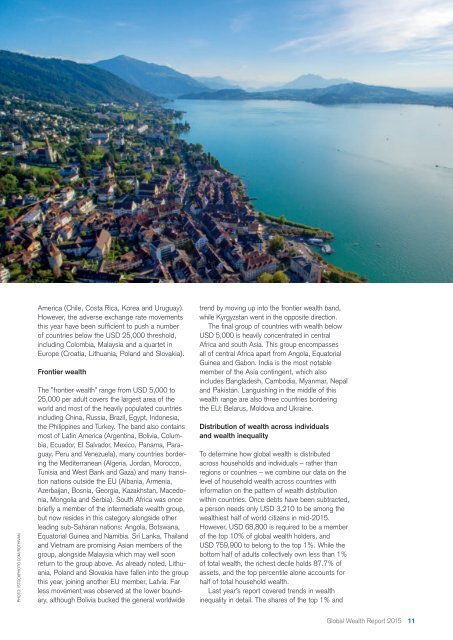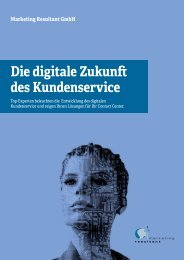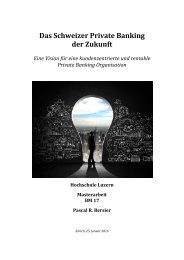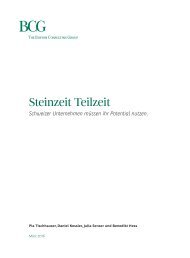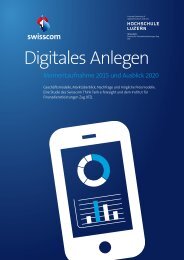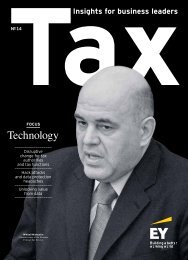Research Institute
ekthsi_0
ekthsi_0
Create successful ePaper yourself
Turn your PDF publications into a flip-book with our unique Google optimized e-Paper software.
PHOTO: ISTOCKPHOTO.COM/ROTHIVAN<br />
America (Chile, Costa Rica, Korea and Uruguay).<br />
However, the adverse exchange rate movements<br />
this year have been sufficient to push a number<br />
of countries below the USD 25,000 threshold,<br />
including Colombia, Malaysia and a quartet in<br />
Europe (Croatia, Lithuania, Poland and Slovakia).<br />
Frontier wealth<br />
The ‟frontier wealth” range from USD 5,000 to<br />
25,000 per adult covers the largest area of the<br />
world and most of the heavily populated countries<br />
including China, Russia, Brazil, Egypt, Indonesia,<br />
the Philippines and Turkey. The band also contains<br />
most of Latin America (Argentina, Bolivia, Columbia,<br />
Ecuador, El Salvador, Mexico, Panama, Paraguay,<br />
Peru and Venezuela), many countries bordering<br />
the Mediterranean (Algeria, Jordan, Morocco,<br />
Tunisia and West Bank and Gaza) and many transition<br />
nations outside the EU (Albania, Armenia,<br />
Azerbaijan, Bosnia, Georgia, Kazakhstan, Macedonia,<br />
Mongolia and Serbia). South Africa was once<br />
briefly a member of the intermediate wealth group,<br />
but now resides in this category alongside other<br />
leading sub-Saharan nations: Angola, Botswana,<br />
Equatorial Guinea and Namibia. Sri Lanka, Thailand<br />
and Vietnam are promising Asian members of the<br />
group, alongside Malaysia which may well soon<br />
return to the group above. As already noted, Lithuania,<br />
Poland and Slovakia have fallen into the group<br />
this year, joining another EU member, Latvia. Far<br />
less movement was observed at the lower boundary,<br />
although Bolivia bucked the general worldwide<br />
trend by moving up into the frontier wealth band,<br />
while Kyrgyzstan went in the opposite direction.<br />
The final group of countries with wealth below<br />
USD 5,000 is heavily concentrated in central<br />
Africa and south Asia. This group encompasses<br />
all of central Africa apart from Angola, Equatorial<br />
Guinea and Gabon. India is the most notable<br />
member of the Asia contingent, which also<br />
includes Bangladesh, Cambodia, Myanmar, Nepal<br />
and Pakistan. Languishing in the middle of this<br />
wealth range are also three countries bordering<br />
the EU: Belarus, Moldova and Ukraine.<br />
Distribution of wealth across individuals<br />
and wealth inequality<br />
To determine how global wealth is distributed<br />
across households and individuals – rather than<br />
regions or countries – we combine our data on the<br />
level of household wealth across countries with<br />
information on the pattern of wealth distribution<br />
within countries. Once debts have been subtracted,<br />
a person needs only USD 3,210 to be among the<br />
wealthiest half of world citizens in mid-2015.<br />
However, USD 68,800 is required to be a member<br />
of the top 10% of global wealth holders, and<br />
USD 759,900 to belong to the top 1%. While the<br />
bottom half of adults collectively own less than 1%<br />
of total wealth, the richest decile holds 87.7% of<br />
assets, and the top percentile alone accounts for<br />
half of total household wealth.<br />
Last year’s report covered trends in wealth<br />
inequality in detail. The shares of the top 1% and<br />
Global Wealth Report 2015<br />
11


